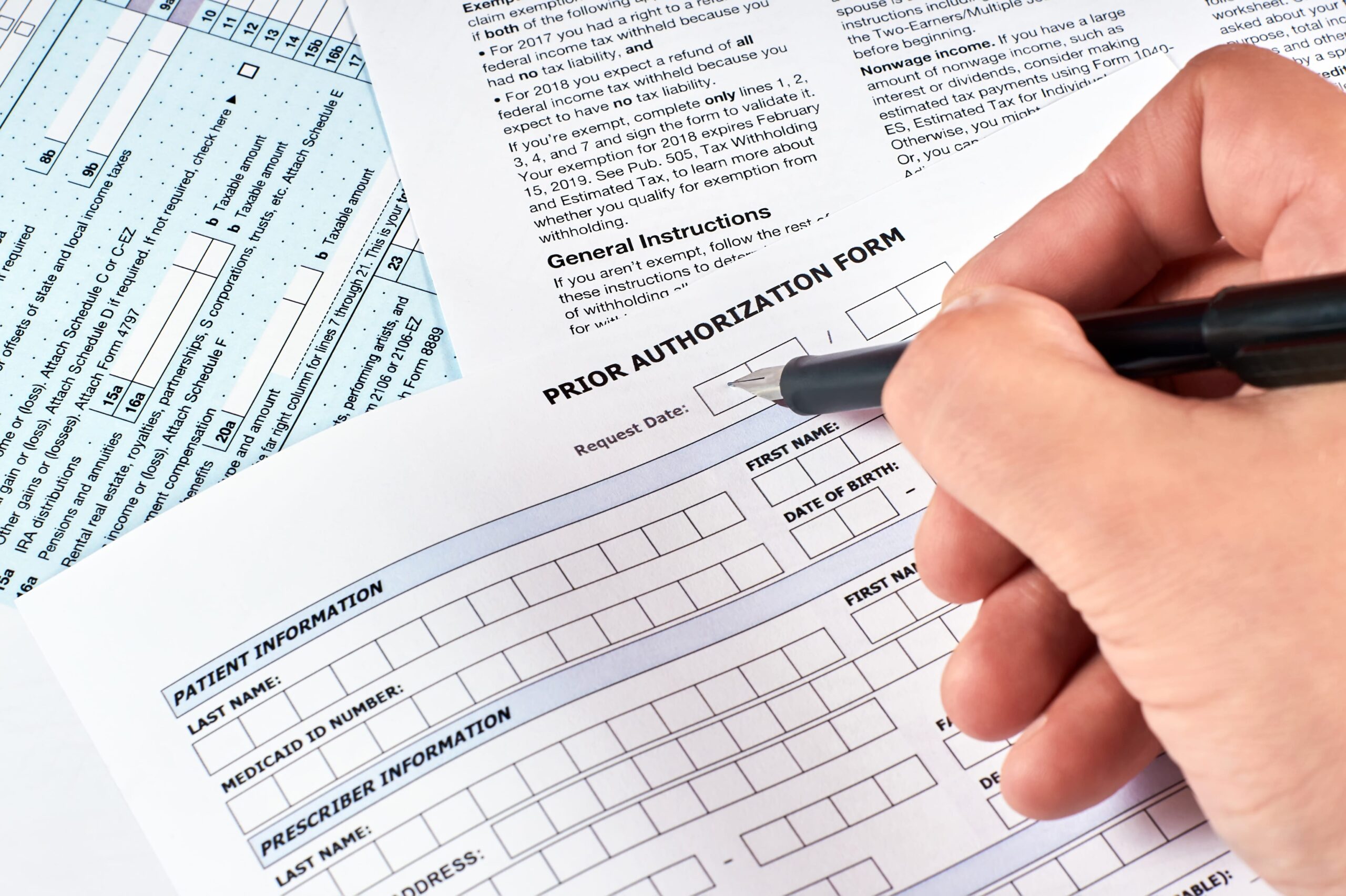Complete patient guide
Prior authorization is a critical healthcare process that affects millions of Americans seeking medical treatment and prescription medications. Understanding how to navigate this system can save you time, money, and frustration while ensuring you receive the care you need.
This comprehensive guide explains every stage — from the initial request to final approval — and shows how QuickFill RX reduces delays and paperwork in this traditionally complex process.
What is Prior Authorization?
Prior authorization is a cost-control process used by health insurers to decide whether they will cover a prescribed medication, device, or service before it’s provided. Your insurer requires advance approval to confirm the treatment is medically necessary and cost-effective.
Your provider submits documentation showing the treatment meets coverage criteria. According to physician surveys, prior authorization touches the vast majority of practices and consumes significant admin time each week.
Why it’s needed
Insurers use prior authorization to prevent unnecessary treatments, encourage clinically appropriate and cost-effective options, and protect plan affordability. For patients, it can feel cumbersome — but aligned preparation greatly speeds approvals.
Common use cases
Prior authorization is most commonly required for:
- Specialty medications — high-cost drugs for cancer, RA, MS, etc.
- Brand-name drugs — when generics exist.
- Advanced imaging — MRI, CT, PET.
- Surgical procedures — elective or specialized care.
- Durable medical equipment — wheelchairs, CPAP, prosthetics.
- Mental health services — intensive/structured programs.
How the process works
Timelines vary from 24 hours to a few weeks depending on case complexity and payer rules. Knowing each phase helps avoid common stalls.
Typically, your clinician identifies the need, gathers records, submits to the insurer, and follows through until a decision is issued.
Required documents
Medical documentation
- Complete history, diagnosis, and ICD-10 codes
- Prior treatments and outcomes
- Lab/diagnostic reports
- Clinical notes supporting medical necessity
- Evidence of failed alternatives (if applicable)
Insurance & administrative
- Current insurance card and policy details
- Patient demographics
- Prescriber credentials and contacts
- Pharmacy information (for medications)
- Treatment plan and expected outcomes
Key steps and timing
- Initial assessment (1–2 days) — provider confirms PA need and checks plan rules.
- Document prep (2–3 days) — compile clinical notes, tests, and rationale.
- Submission & review (3–14 days) — insurer evaluates against criteria.
- Decision & notice (1–2 days) — approval, denial, or request for more info.
Standard non-urgent requests are generally processed within 14 days; urgent requests within ~72 hours.
QuickFill RX’s role in streamlining PA
QuickFill RX reduces admin burden by automating forms, validation, and follow-ups while keeping providers and patients informed in real time.
Simplifying the paperwork
The platform pre-fills payer forms with verified data, runs completeness checks, and flags missing items before submission — cutting denials due to incomplete info.
Speeding up approval
Real-time payer connectivity, status tracking, and automated reminders prevent stalls. Analytics highlight options most likely to meet a specific plan’s criteria, reducing back-and-forth and appeals.
Need help now? Call 818-457-4011 or start here: QuickFill RX Prior Authorization Assistance. For insurance checks up-front, see Benefits Investigation & Verification. If a request is denied, use Appeals Management.
Frequently asked questions (FAQ)
What is prior authorization in healthcare?
Prior authorization is advance approval required by insurers before covering certain medications, treatments, or services to confirm medical necessity and cost-effectiveness.
How long does prior authorization usually take?
Typical timeframes are 3–14 business days for standard requests; urgent cases are generally reviewed within ~72 hours.
Who submits the prior authorization?
Your provider’s office submits on your behalf; you may be asked for insurance details or records.
Can I track progress?
Yes — contact your provider’s office or your insurer with the reference number; QuickFill RX also supports status tracking.
What if it’s denied?
Work with your doctor to appeal, consider covered alternatives, or explore savings programs. QuickFill RX can assist with appeals.
Do emergencies need prior authorization?
Emergency care typically doesn’t require PA, though notification may be needed after treatment.
Can requirements change mid-treatment?
Yes — payer policies can change; verify when plans or benefits change.
Understanding prior authorization doesn’t have to be overwhelming. With preparation and QuickFill RX, you can move faster and get the care you need on time.

